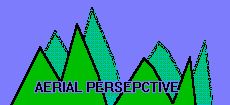
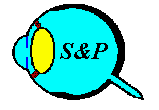
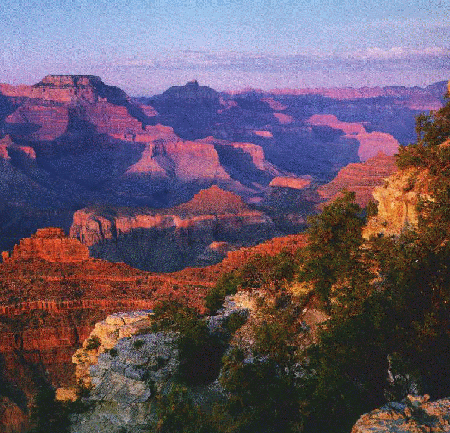 The
atmosphere scatters light. That is what you have probably heard causes the sky to be blue.
Well, it is true, but the fact that the atmosphere scatters light also plays a role in our
depth perception. The short or blue wavelengths of light are most easily scattered every
whichway by the particles in the atmosphere which is why the sky is blue, although
scattering does occur to some extent for other wavelengths of light. In addition, the
scattering occurs for all light regardless of the direction that the light comes from, i.e.,
there is nothing special about sunlight that causes it to be scattered more. Thus, light
coming from a distant object should have some of its light scattered. That will have two
effects on the light reaching our eyes: (1) since blue is scattered more, more distant
objects should appear bluish, (2) since not all of the light is traveling in a straight
line to us, then more distant objects should appear a bit fuzzy and not as in a sharp of a
focus. Examine the picture of the Grand Canyon to the left, especially compare the
appearance of the foreground to the portion of the rim of the canyon in the distance. The
texture on the near side is clear, sharp, and tinged with reddish hues. The far rim is
less distinct, and less distinct than can be accounted for just because it is farther
away, and the walls, made of the same material as the near side, have a decidedly bluish
cast. The
atmosphere scatters light. That is what you have probably heard causes the sky to be blue.
Well, it is true, but the fact that the atmosphere scatters light also plays a role in our
depth perception. The short or blue wavelengths of light are most easily scattered every
whichway by the particles in the atmosphere which is why the sky is blue, although
scattering does occur to some extent for other wavelengths of light. In addition, the
scattering occurs for all light regardless of the direction that the light comes from, i.e.,
there is nothing special about sunlight that causes it to be scattered more. Thus, light
coming from a distant object should have some of its light scattered. That will have two
effects on the light reaching our eyes: (1) since blue is scattered more, more distant
objects should appear bluish, (2) since not all of the light is traveling in a straight
line to us, then more distant objects should appear a bit fuzzy and not as in a sharp of a
focus. Examine the picture of the Grand Canyon to the left, especially compare the
appearance of the foreground to the portion of the rim of the canyon in the distance. The
texture on the near side is clear, sharp, and tinged with reddish hues. The far rim is
less distinct, and less distinct than can be accounted for just because it is farther
away, and the walls, made of the same material as the near side, have a decidedly bluish
cast. The animation to the below attempts to illustrate areal perspective in a dynamic way by adding and removing the depth cue. The oval in the upper right hand part of the image starts out identical to the other oval. Then the edges are blurred and the color is tinged with blue (by simply letting some of the blue background seep through). When these changes are made, the oval seems to be slighly farther away than before. There is no relative size change that helps the depth percetion. In fact when the oval is blurred at the edges it is slighly larger to compensate for the fact that it is harder to see the edges. So the apparent depth change has to be due to the change in the coloring and clarity of the oval. |
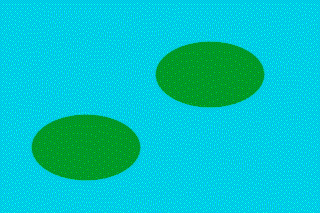 As is clear in the photograph, distance affects the clarity and color tinting of an object. The blueing and slight blurring is called aerial perspective. These techniques have been used in painting and do help give the impression of depth. Look at the painting Near Salt Lake City by Albert Bierstadt to the right. The mountains get less distinct in the distance. In addition, the artist uses a clearly bluish tint on some of the distant peaks. In many ways these effects mimic those seen in the photograph of the Grand Canyon above. |
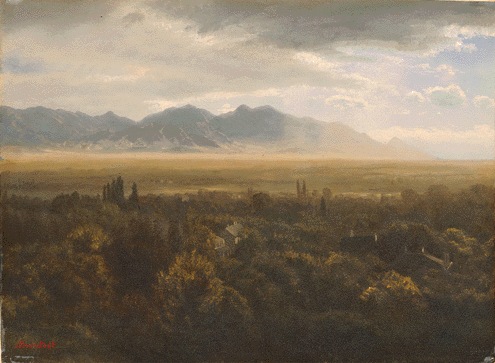 Near Salt Lake City by Albert Bierstadt |